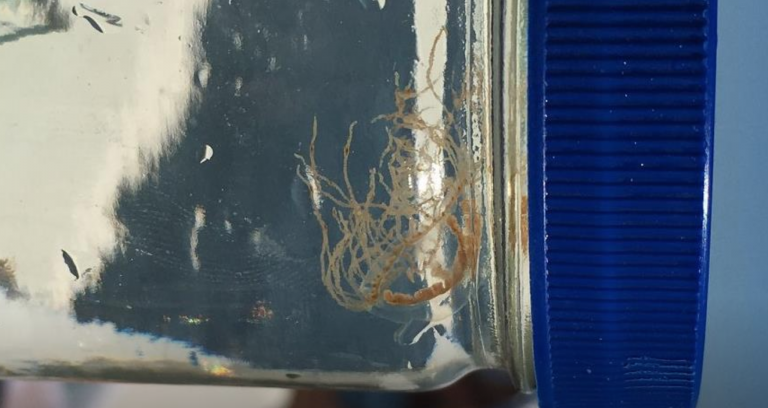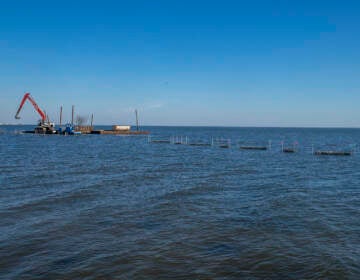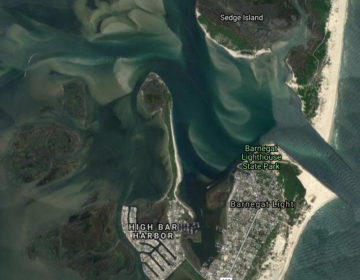Dozens of dangerous jellyfish found near Barnegat Bay’s Tices Shoal
The dangerous and invasive clinging jellyfish continue to head south along the Barnegat Bay in Ocean County, a marine biologist says.

A clinging jellyfish found near Tices Shoal in the Barnegat Bay, a popular boating hangout. (Dr. Paul Bologna)
The dangerous and invasive clinging jellyfish continue to head south along the Barnegat Bay in Ocean County, a marine biologist says.
Montclair State University’s Dr. Paul Bologna says more than three dozen dime-sized clinging jellyfish, which pack a powerful sting, were found Monday in eelgrass beds near Tices Shoal, a popular boating hangout adjacent to Island Beach State Park.
NEW: Two swimmers stung in Barnegat Bay, sent to ER as clinging jellyfish move south, now in waters behind Island Beach State Park. Story @NBCNewYork @MSUjellyfish @tedgreenbergNBC @JSHurricaneNews pic.twitter.com/CnEWBnoN8q
— Brian Thompson (@brian4NY) July 9, 2018
On sunny and warm summer days, this portion of the Barnegat Bay is crowded with boaters who drop their anchors and wade through the shallow waters.
Bologna advises anyone spending time in the bay to be vigilant after two people were stung last week and needed medical attention at an area hospital. He told WNBC that while the stings weren’t considered life-threatening, they were administered morphine for the pain.
Clinging jellyfish were first found this year within Monmouth County’s Shrewsbury and Manasquan rivers in May before being collected last month in Ocean County’s Metedeconk River, a Barnegat Bay tributary.
The dime-sized clinging jellyfish, native to the Pacific Ocean region, were first found in New Jersey in 2016 when a fisherman collected one near the Point Pleasant Canal in Ocean County.
Along the Eastern seaboard, they were first found in coastal Massachusetts in the early 20th century. They are known to spread by ships.
Oceanus Magazine describes the species as resembling “a piece of art glass or a flash bling brooch you would never want to wear” with “hula-hoop skirts of 60 to 90 glass-like tentacles that uncoil sharp threads and emit painful neurotoxin.”
A state news release advises that clinging jellyfish are not known to inhabit ocean beaches or other sandy areas.
Rather, they tend to attach themselves to “submerged aquatic vegetation and algae in back bays and estuaries — areas not heavily used for swimming,” according to the release.
Officials say anyone stung by the jellyfish — which can produce severe pain, muscle cramping, and other localized symptoms — should immediately treat the impacted area:
- Apply white vinegar to the affected area to immobilize any remaining stinging cells.
- Rinse the area with salt water and remove any remaining tentacle materials using gloves or a thick towel.
- A hot compress or cold pack can then be applied to alleviate pain.
- If symptoms persist or pain increases instead of subsiding, seek prompt medical attention.
If you see a clinging jellyfish, expert say to not attempt a capture. Instead, take a photograph, if possible, and send it to Dr. Paul Bologna (bolognap@mail.montclair.edu) or Joseph Bilinski (joseph.bilinski@dep.nj.gov) along with the location.
Anyone who spots these jellyfish or anything unusual can also post to the New Jersey Jellyspotters Facebook group.
WHYY is your source for fact-based, in-depth journalism and information. As a nonprofit organization, we rely on financial support from readers like you. Please give today.



